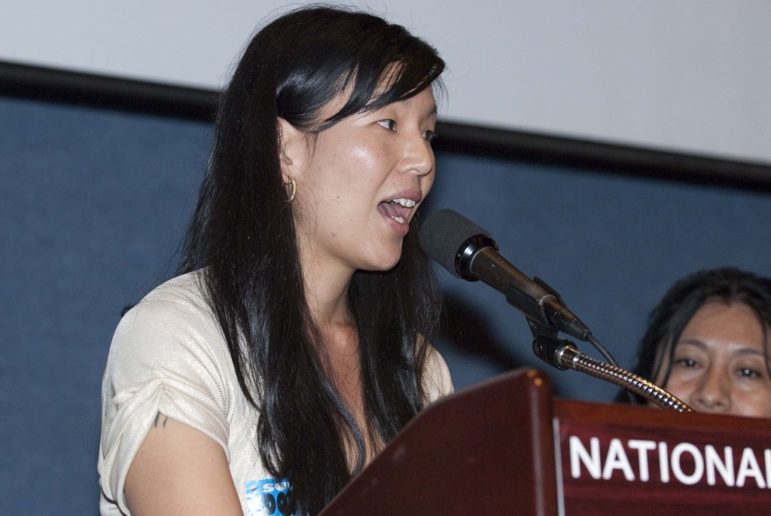
October 30, 2017; US News
Over the last few years, NPQ has written about nonprofits employing workers “under conditions that keep the workers in poverty.” This is particularly prominent in certain fields, such as personal-care aides, which is on track to become the fastest-growing over the next 10 years, as the number of people in the U.S. over 65 is expected to double by 2050. A recent opinion article in US News by Ai-jen Poo, executive director of the National Domestic Workers Alliance, highlights the need for “fair wages, decent working conditions and access to reproductive health care, including abortions” for care workers.
Ninety percent of care workers are women. The majority of those are women of color, and between 30 and 40 percent are immigrants. Poo notes that the work they perform is highly skilled and valuable, but undervalued. In the US, “the average income for home care-workers is $17,000 a year. The median income for an elder care-worker…is $13,000 a year.” Further, domestic workers don’t qualify for basic worker protections like “limits on hours and overtime pay, days off, health benefits and paid leave.” There is also almost no room for advancement or path to higher earnings, save a few employers who provide peer mentor or senior aide positions.
These conditions compound; for workers at such a low rate of pay, it’s nearly impossible to secure healthcare on the private market. The Affordable Care Act, particularly for the states that implemented Medicaid expansion (19 did not), helped these workers, who often otherwise don’t qualify. However, not only is the Trump administration trying to roll back these benefits, the federal Hyde Amendment severely limits access to abortion and birth control under Medicaid. Further, the administration’s attack on immigrants directly impacts this work force.
Poo writes, “The result is that many domestic workers spend their days caring for our families, and their wages caring for their families, with little time or resources left for their own health or well-being.”
There is already a care worker shortage and that can be expected to continue, if not grow. Further, Karen Kahn, writing for NPQ, notes that turnover is high, a result of an “‘employment model’ of cheap, replaceable labor…evolved during an era when millions of women entered the labor force for the first time, and jobs for women of color outside of ‘domestic’ employment was scarce.”
Though private companies have entered the “ever-expanding long-term care sector,” and now dominate it, nonprofits have a key role to play in shaping this significant and growing work force.
Sign up for our free newsletters
Subscribe to NPQ's newsletters to have our top stories delivered directly to your inbox.
By signing up, you agree to our privacy policy and terms of use, and to receive messages from NPQ and our partners.
Kahn notes that “nearly 75 percent of nursing home care and home health care is paid for through Medicaid and Medicare,” and “reimbursement rates…have not increased for several years.”
The National Domestic Workers Alliance is the leading organization in the US working for the inclusion of domestic workers in the Fair Labor Standards Act, which guarantees minimum wage, overtime, and sick and vacation pay.
Caring Across Generations, a coalition of more than 100 local, state, and national organizations, has a policy agenda for 21st century caregiving which includes access to quality care, affordable home care for families and individuals, and better care jobs. Their better care jobs agenda supports four proposals:
- Increasing the national wage floor for domestic workers to $15.00 per hour. (According to Kahn, in 2015 the median wage for home care aides was $10.11 per hour.)
- Improving workforce training and career mobility to ensure quality.
- Developing a path to citizenship for undocumented caregivers.
- Creating a national initiative to incentivize and recruit family caregivers into the paid workforce (Eighty-five percent of long-term care is provided by family members).
Health coverage is also a significant goal for workers who have an on-the-job injury rate three times higher than the average US worker and work erratic hours, which affects eligibility for employer-sponsored plans.
The time is ripe for leveraging the context of and conditions in this work force. Done well, it may provide a blueprint for others, and for a more caring society.—Cyndi Suarez












